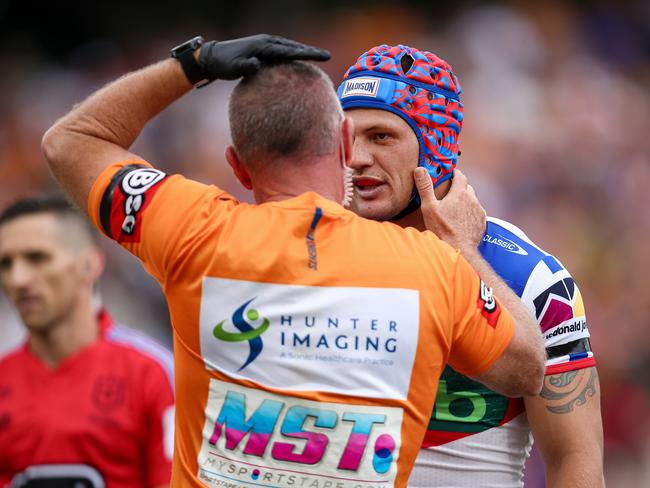RLPA player poll reveals concern over NRL and NRLW players continuing to train after a concussion
An RLPA player survey has revealed NRL and NRLW players are putting themselves at risk by continuing to train with concussion symptoms, in what has emerged as a blind spot in the game’s strict head injury protocols.

NRL
Don't miss out on the headlines from NRL. Followed categories will be added to My News.
NRL and NRLW players are continuing to train after experiencing a suspected concussion in what has emerged as a blind spot for the game’s strict head injury protocols.
A wide-ranging Rugby League Players Association survey has revealed more than a third of men and almost half of women players are under-reporting symptoms and continuing to train after experiencing a suspected concussion at training.
Data obtained from a Players’ Pulse poll of almost 700 men’s and women’s players revealed 22 per cent of NRL players and seven per cent of NRLW players reported experiencing a concussion at training, diagnosed or not, across the past 12 months.
Those numbers have dropped by three per cent in the women’s game from 2023, but increased by two per cent for male players.
The swing in public opinion on head injuries has led to the expectation of players standing down, especially given the often graphic nature of concussions broadcast during matches.
However, the RLPA has raised concerns players could be in a blind spot while training, where there is less public scrutiny and a perceived pressure to finish a session.

Of the players who reported a suspected concussion at training, 36 per cent of men and 46 per cent of women continued to train, while 20 per cent of men and 33 per cent of women reported they felt pressured to continue.
The results also show 28 per cent of men and 40 per cent of women reported they returned to training before receiving a medical clearance, while 16 per cent of men and just six per cent of women under-reported their symptoms.
Concerned by the data, the RLPA will push to raise awareness in the playing group of the importance of honest reporting on concussion symptoms.
However, the union is also pushing for more protective measures at training, including contact load assessments, technology to monitor impact and more research into symptoms and recovery from concussion.
Standards around concussion protocols and education are constantly changing within the NRL to prevent long-term health impacts on players.

“The NRL has one of the most comprehensive head-injury policies and procedures in sport,” an NRL spokesperson said.
“The NRL has policies and procedures for match days and for club training that ensures that clubs have visibility about concussion risks during training and take appropriate action to address those risks.
“These procedures are contained in the NRL Operations Manual and include requirements for club officials to monitor all contact sessions and ensure compliance with the stated protocols.
“We will continue to invest in continuous education, training and compliance with protocols.
“The NRL bases policies and decisions on conclusive data. We will continue to invest in research and review our policies regularly.”
The full results of the Players Pulse survey will be released this week, which has compiled data from almost 700 players across the game.
It was distributed to all men’s and women’s players, with more than 500 NRL players and almost 190 NRLW players completing the questionnaire.





